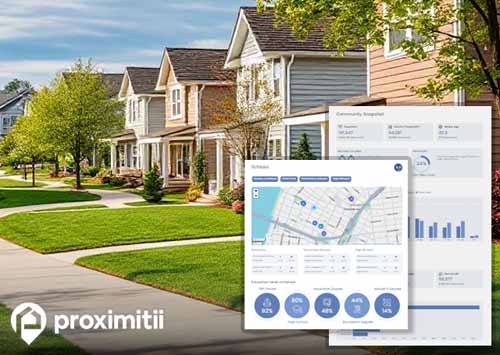| Statistic | Reportedincidents | /100k people | Madison/100k people | South Dakota/100k people | National/100k people |
| Total crime | 54 | n/a (estimate) | 890 | 1,968 | 2,281 |
| Murder | 0 | n/a | 0.0 | 2.9 | 5.7 |
| Rape | 4 | n/a | 65.9 | 50.3 | 38.0 |
| Robbery | 1 | n/a | 16.5 | 20.4 | 66.5 |
| Assault | 5 | n/a | 82.4 | 276.1 | 264.1 |
| Violent crime | 10 | n/a (estimate) | 165 | 350 | 364 |
| Burglary | 4 | n/a | 65.9 | 222.1 | 250.7 |
| Theft | 35 | n/a | 577.0 | 1,151.4 | 1,347.2 |
| Vehicle theft | 5 | n/a | 82.4 | 244.9 | 318.7 |
| Property crime | 44 | n/a (estimate) | 725 | 1,618 | 1,917 |


The Madison crime rates are 65.4% lower than the national average. There are two main categories of crime - violent crime and property crime. Violent crime consists of murder, rape, robbery and assault, while property crimes include burglary, theft and vehicle theft. There were a total of 8 violent crimes in Madison (134 per 100,000 people), which is 63.7% lower than the national average and there were a total of 40 property crimes (670 per 100,000 residents) which is 65.7% lower than average.
Madison showcased a dedication to violent crime safety in its latest reported crime year by achieving a murder rate of 0. This accomplishment could indicate that it is a safe place for residents, but also provides a shining example to other urban areas endeavoring to create safer communities.
Since 1990, property crime rates per 100,000 people in the United States have steadily decreased. Recently, the average did increase slightly. Having said that, Madison has a property crime rate that is well below the national average with only 670 reported property crimes compared to the national average of 1954. Based on this report, Madison remains a very safe place to live with regards to property crime.
Determining whether Madison is a place to live may not always yield a simple answer, given the city's varying safety levels across different areas. Nonetheless, comprehending the city's overall crime rate can be a valuable asset. In broad terms, Madison has an overall crime rate that is 65% lower than the national average. When we take a look at crime on a daily basis, this translates into 0.13 daily occurrences, comprising 0.02 violent crimes and 0.11 property crimes. Scrutinizing these statistics provides a foundation for a more informed assessment of the suitability of Madison as a potential place to establish residency.
Year-over-year crime data allows residents and potential residents to assess the crime in Madison. A decrease in crime rates may indicate improving safety, while an increase could raise concerns. The year-over-year crime rate in Madison has increased by 29.7%. Violent crimes have didn't change by 0%, while property crimes have increased by 37.9%. By comparing crime rates from one year to the next, authorities and communities can identify trends and patterns in criminal activity. This helps in understanding whether crime is increasing, decreasing, or remaining stable over time.
High population density areas are often large urban centers with diverse economic opportunities. These areas can exacerbate income inequality, with pockets of poverty existing alongside affluence. Areas with economic disparities may experience higher property crimes and, in some cases, violent crimes. On the other hand, areas with low population density tend to see lower Madison crime rates. The population density in Madison is 1570.5 people per square mile, while the national average is 90.6 people per square mile.
In Madison, the cost of living is 19.52% lower than the national average. A high cost of living can induce economic stress for locals, especially those with limited financial resources. When people grapple with soaring housing expenses, utility bills, healthcare costs, and other essential necessities, they may be driven towards criminal activities, including theft or fraud, as a means of financial survival. Conversely, cities boasting a lower cost of living may mitigate economic pressures and potentially result in reduced crime rates.
In Madison, the ratio of police officers and civilians stands at 1.64 per 1,000 residents, contrasting with the national average of 3.25. This discrepancy highlights the potential impact of law enforcement and community policing on crime rates. The strength of their collaboration can serve as a deterrent to criminal behavior, fostering a safer environment. Effective law enforcement leans heavily on community policing strategies that prioritize the cultivation of trust and cooperation between police and residents. It's essential to recognize that the effectiveness of these efforts isn't solely tied to the quantity of officers but also hinges on the quality of their engagement with the community.

Why stop at city-to-city? With Local Insights, you can compare neighborhoods, zip codes, or even exact addresses. Access 300+ hyperlocal data points—from schools and crime to housing and amenities—to see which area is the better fit.

| Item | Madison | South Dakota | National |
| Law enforcement employees (officers & civilians) | 11 | 995 | 558,732 |
| Police officers & civilians /1000 residents | 1.6 | 2.2 | 3.3 |
| State | Total offenders | South Dakota /100K | National /100K |
| South Dakota | n/a | n/a | n/a |
| City | Population | Violent crime/100k people | Property crime/100k people | Total crime/100k people |
| Brant Lake, SD | 66 | 141 | 654 | 795 |
| Lake Madison, SD | 811 | 141 | 654 | 795 |
| Colman, SD | 683 | 299 | 1,381 | 1,680 |
| Chester, SD | 285 | 321 | 1,484 | 1,805 |
| Nunda, SD | 50 | 392 | 1,814 | 2,207 |
| Ramona, SD | 413 | 408 | 1,887 | 2,295 |
| Wentworth, SD | 153 | 469 | 2,166 | 2,635 |
| Madison, SD | 7,249 | 165 | 725 | 890 |
| City | Population | Violent crime/100k people | Property crime/100k people | Total crime/100k people |
| Kill Devil Hills, NC | 7,249 | 420 | 2,022 | 2,441 |
| Springs, NY | 7,246 | 127 | 585 | 712 |
| Waikele, HI | 7,246 | 119 | 1,062 | 1,181 |
| Tell City, IN | 7,243 | 256 | 1,388 | 1,644 |
| Crystal City, TX | 7,256 | 264 | 579 | 843 |
| Madison, SD | 7,249 | 165 | 725 | 890 |